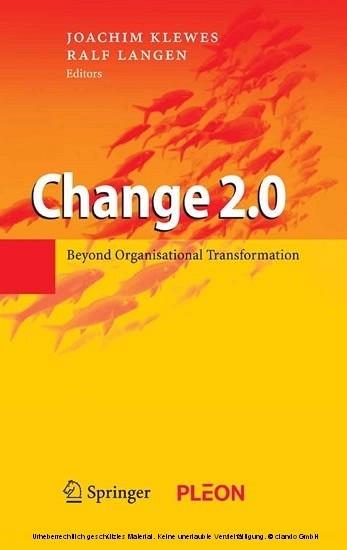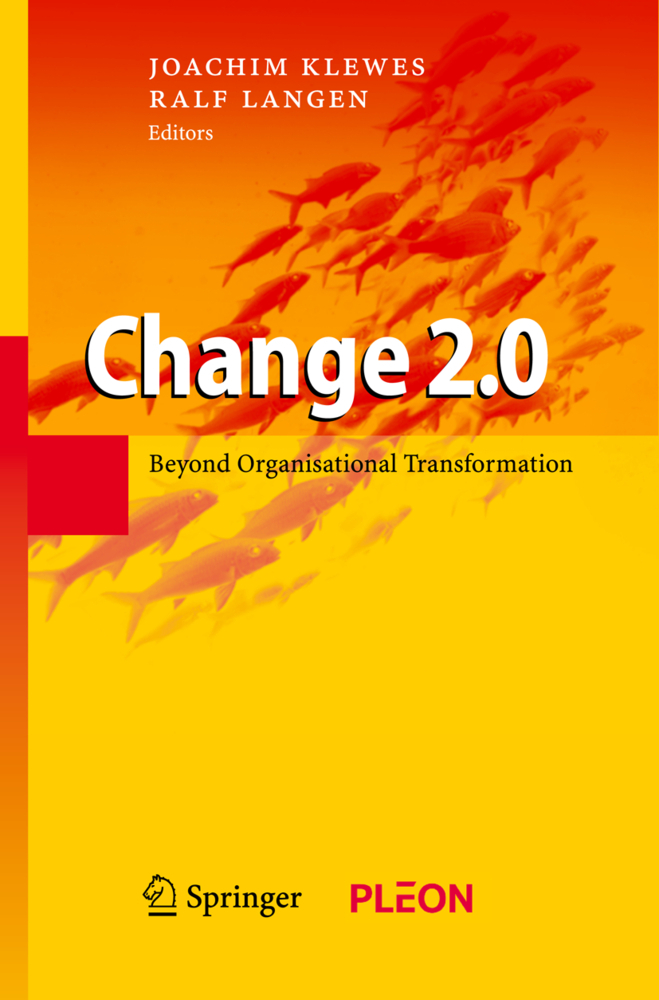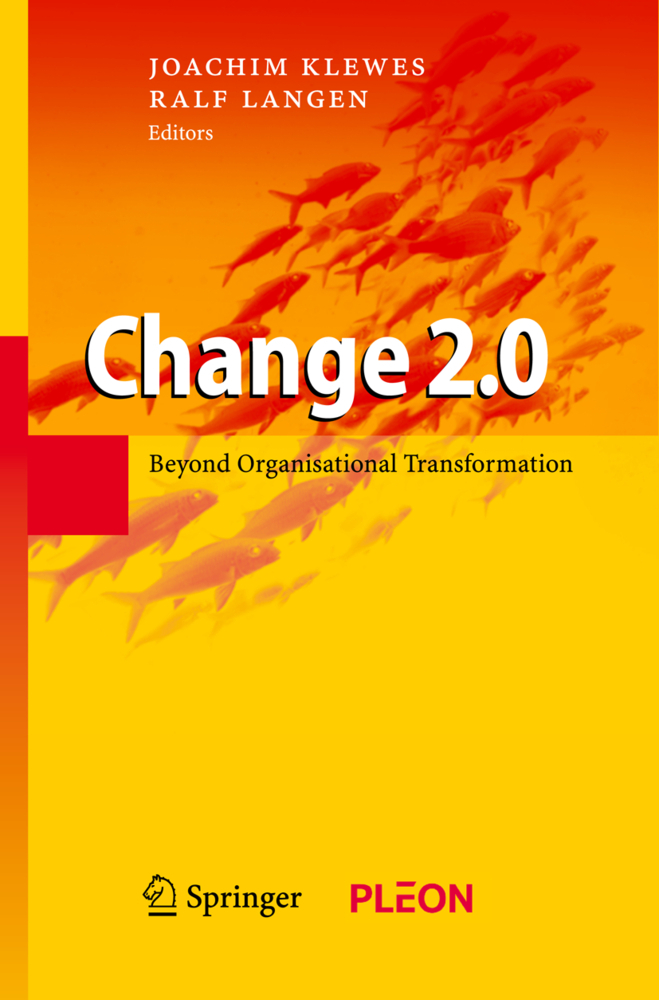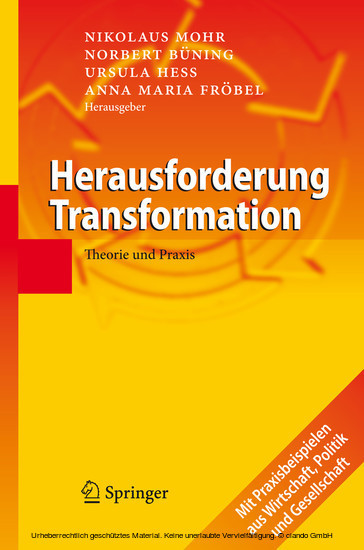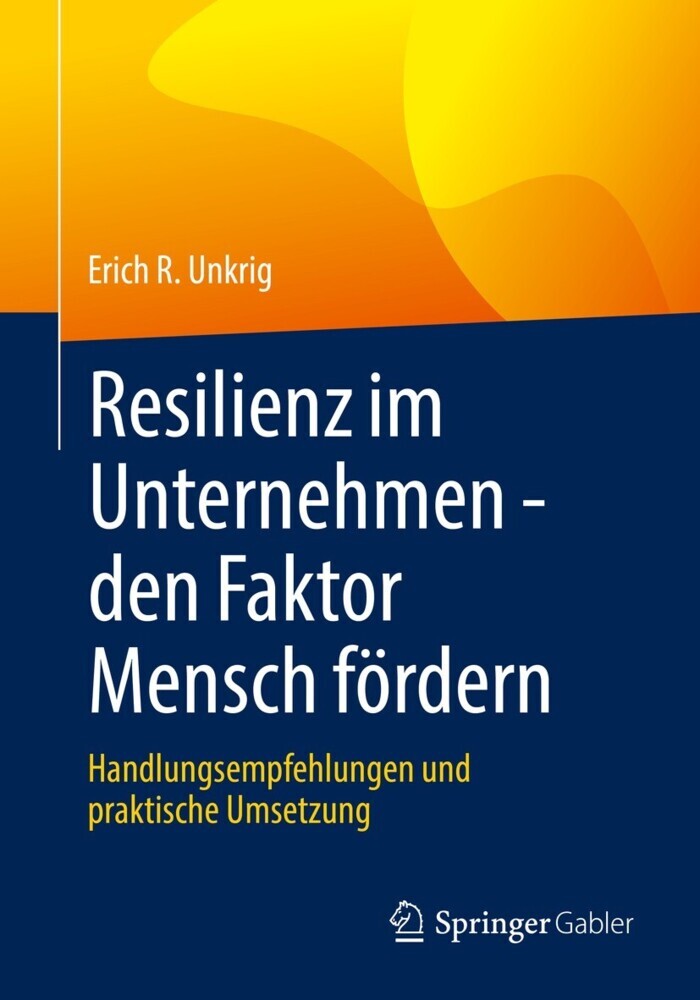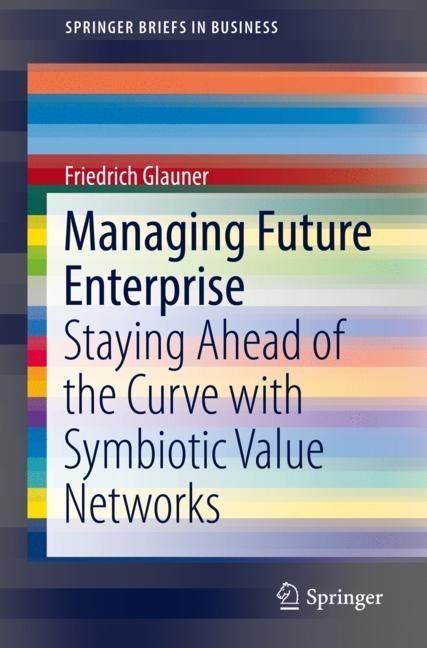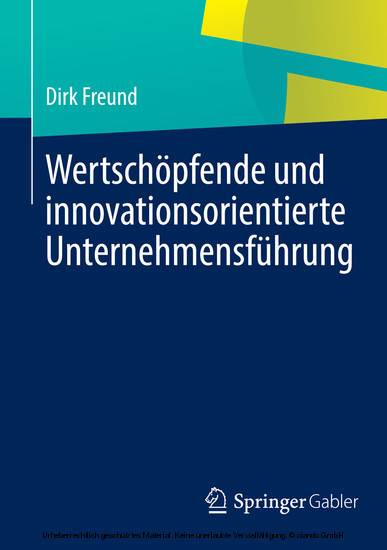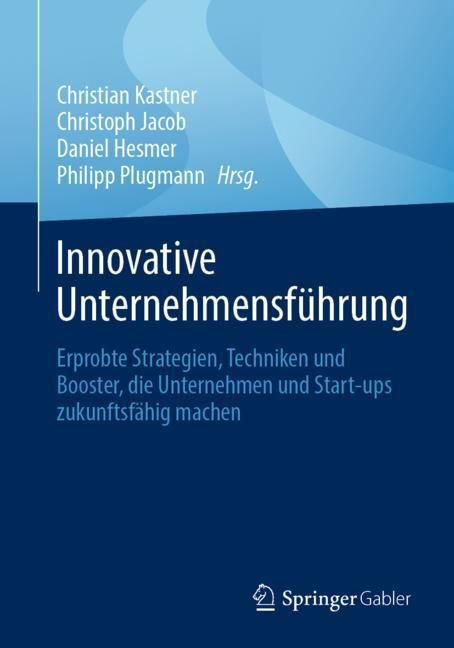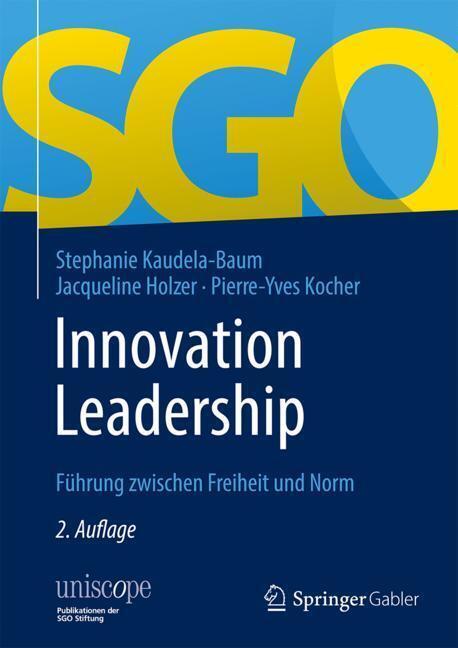Change 2.0
Beyond Organisational Transformation
Change 2.0
Beyond Organisational Transformation
"Change before you have to" - the advice by Jack Welch, former CEO of industry giant General Electric, still holds true today. Even more so: organisations permanently have to face change, if they want to succeed economically. No small feat, given the high expectations that employees have in times of transformation towards their management. Staff cannot be entirely left out of the process, anymore. This hard-learned lesson is fairly well understood by now. But how should engagement be designed and carried out? This collection explores the different approaches to employee participation - from a practitoners' perspective. Consultants from Pleon, Europe's leading communications agency, as well as managers and academics share their experience with change communication and offer valuable insights on what engagement - if tackled correctly - can do for organisations: it adds to the internal trust and external reputation.
1;Contents;5 2;Foreword;11 2.1;It's all about the people;12 2.2;Acknowledgements;14 3;Incite;16 3.1;It may come as a surprise: Successful change management is mainly a matter of letting it happen;17 3.1.1;Accept change as a constant state;18 3.1.2;Dismantle obstacles;18 3.1.3;Get the current flowing again;19 3.1.4;Find your identity and change it constantly;21 3.1.5;Less method, more personality;22 3.1.6;Outlook;24 3.1.7;References;24 3.2;The human factor in change processes: Success factors from a socio- psychological point of view;25 3.2.1;Implementation strategies: Top-down or bottom-up?;25 3.2.2;Attitude patterns of the affected staff;27 3.2.3;Causes and forms of resistance;27 3.2.4;Twelve success factors in change processes;32 3.2.5;Conclusion;36 3.2.6;References;37 3.3;Accelerated change dynamics within the healthcare industry: Just a trend, or is there more to it?;41 3.3.1;High level of change dynamics within the healthcare industry;42 3.3.2;Why are change programmes more in demand today than ever before?;43 3.3.3;Portfolio - Process - People: The trinity of speed in change;44 3.3.4;A digression concerning the real power of corporate culture;47 3.3.5;Corporate communications as the mediator of change;48 3.3.6;Change communication as a key success factor for change;53 3.3.7;Summary: Speed as a basis for change;55 3.4;The power of ideas - Reputation management and successful change;57 3.4.1;Reputation, an acquirable good;59 3.4.2;Reputation management in change processes: Laws and regulations;60 3.4.3;An example from the financial sector;61 3.4.4;Conclusion;66 3.4.5;References;67 3.5;Change management in alliances;69 3.5.1;Building and managing alliances;70 3.5.2;The benchmark case: Continuous change;73 3.5.3;Change management in alliances - Considering the specifics;74 3.5.4;Conclusion;77 4;Insight;79 4.1;Winning people's hearts and minds;81 4.1.1;The power of dialogue;81 4.1.2;Tools for successful dialogue;82 4.1.3;Engagement throughout;86 4.1.4;Impact of change communication;86 4.1.5;Start talking;87 4.2;Use of multipliers in change communication: How credible personal communication can make change effective;89 4.2.1;What is the multiplier approach and what is it not?;90 4.2.2;Where does it apply in practice?;90 4.2.3;What is the role of multipliers?;91 4.2.4;How much time do multipliers need?;92 4.2.5;How to choose multipliers?;92 4.2.6;How to prepare multipliers?;94 4.2.7;How to integrate multipliers into communication activities?;97 4.2.8;How to measure the success of the multiplier approach?;99 4.2.9;Benefits;99 4.2.10;Lessons learned;100 4.3;Why engagement matters - From command and control to collective learning via social software;101 4.3.1;Engagement in change processes;102 4.3.2;Social software as an engagement tool in change processes;106 4.3.3;Conclusion;113 4.3.4;References;114 4.4;The importance and use of analyses in change management;117 4.4.1;Change controlling;118 4.4.2;Demands on the execution of change controlling;120 4.4.3;Staff and change controlling;121 4.4.4;Areas of application for change controlling;122 4.4.5;Evaluation at staff level;123 4.4.6;Quantitative and qualitative methods;124 4.4.7;Feedback systems;125 4.4.8;Improving the prospects of success in change - 'Change Explorer';127 4.4.9;Outlook;128 5;Inside;131 5.1;The quiet transformation of an ugly duckling: The German Federal Employment Agency's gradual transition - From a bottomless pit for taxpayers' money to an efficient service provider;133 5.2;How to develop a strategic business unit within a historical and sound structure: The formation of Radeberger Group;141 5.2.1;A brief look back;142 5.2.2;Paradigms as the solid foundation of all business decisions;142 5.2.3;Radeberger Group as a new strategic business unit;142 5.2.4;Change in progress;144 5.2.5;The human factor: Involvement by communication;147 5.2.6;Conclusion;149 5.3;Managing complex change: Challenges at the National Health Service Greater Glasgow and Clyde;151 5.3.1;The co
| ISBN | 9783540774952 |
|---|---|
| Artikelnummer | 9783540774952 |
| Medientyp | E-Book - PDF |
| Auflage | 2. Aufl. |
| Copyrightjahr | 2008 |
| Verlag | Springer-Verlag |
| Umfang | 188 Seiten |
| Sprache | Englisch |
| Kopierschutz | Digitales Wasserzeichen |

